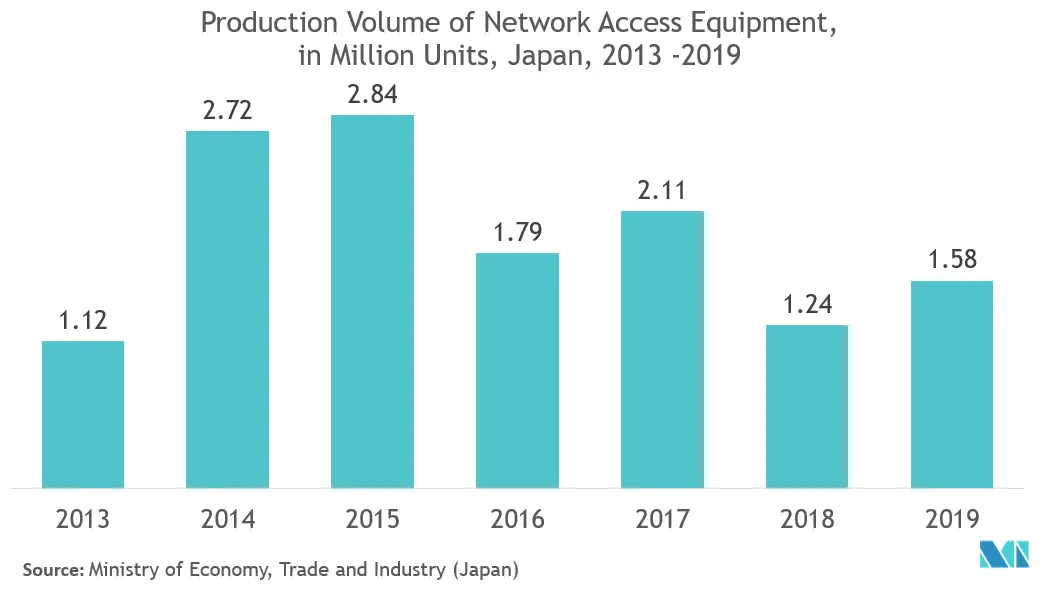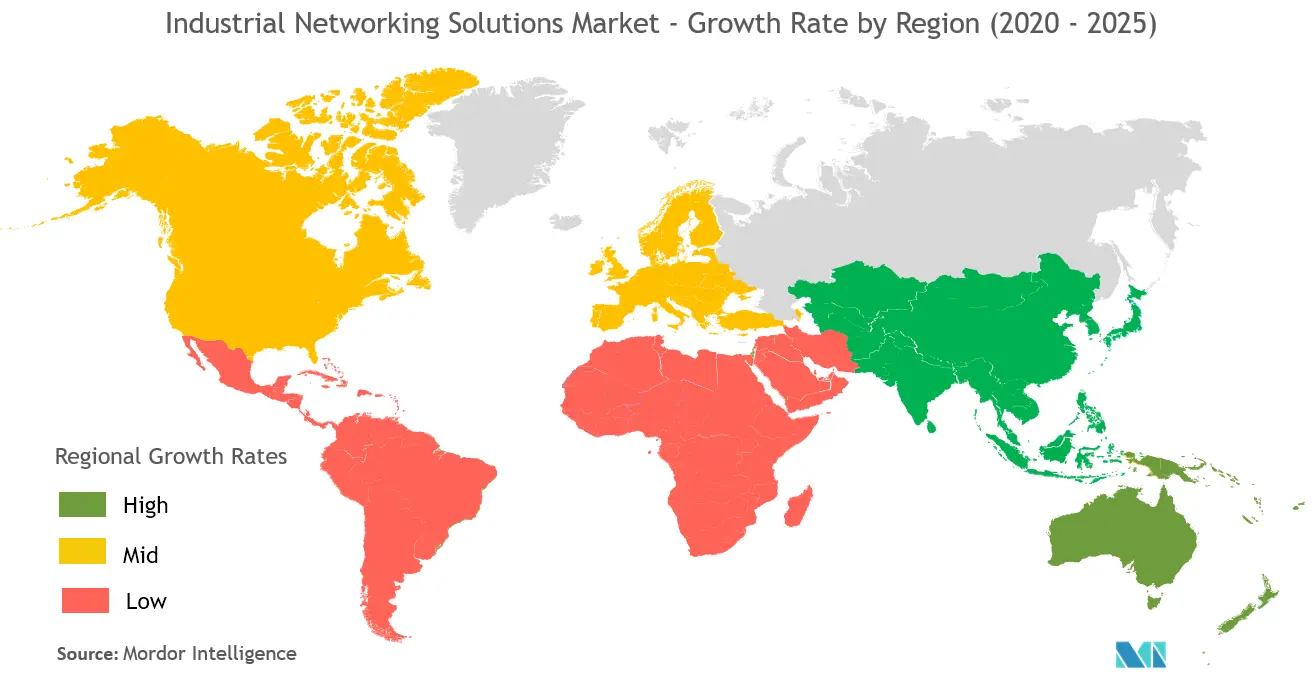Market Trends of Industrial Networking Solutions Industry
This section covers the major market trends shaping the Industrial Networking Solutions Market according to our research experts:
Manufacturing is Expected to Hold Significant Share
- Manufacturing undergoes improvement and optimization programs throughout the lifecycle of the products being manufactured. The trend is that the process improvements need to be performed quite frequently and nearly continuously in some cases. More and more IIoT sensors are being added to the existing operations to achieve more efficient process improvement. For instance, the U.S. Food and Drug Administration (FDA) has guided manufacturers to adopt a risk-based approach to meeting product quality and regulatory requirements through Process Analytic Technology (PAT). A core part of PAT is continuous inline monitoring of the process that engages in transforming the raw materials into end products. This monitoring technique requires additional instruments and sensors for the process, and the new sensors will require industrial networks to communicate with the control systems.
- In today’s digitally-driven manufacturing environments, there are many sensors and devices and too much data to depend on manual processes. There is an increasing need for manufacturing organizations to automate the monitoring of systems across the factory floor and their responses to abnormal conditions, such as equipment showing signs of stress. Because most industrial operations have been taking place for a long time, the sensors need to be retrofitted onto existing machinery, which can be done efficiently with wireless communication technologies. Wireless mesh networks using technologies such as Bluetooth LE mesh and IEEE 802.15.4 and will provide the edge connectivity to such sensors. Wired sensors will be relevant and can even migrate from dedicated Fieldbus technologies to variants of industrial Ethernet, including single-pair Ethernet networks.
- Mass customization in manufacturing has caused a drastic shift in assembly plants. Modern assembly logistics and lines need to be agile and flexible to manage the required product variability without compromising quality. To support flexible manufacturing, the network should have the ability to self re-configure dynamically. To maintain the highest production level in manufacturing, machine maintenance needs to take place during scheduled downtime. This is effective when machines can predict when and where faults are about to happen to be serviced then. This collected data needs to be communicated across multiple industrial networks for analysis such that it could also be used for machine learning and for conducting business intelligence.
- In June 2020, Veracity Industrial Networks, a developer of Industrial Software Defined Network (SDN)-based technology for operational networks announced a new seed round of funding, backed by existing investors Schweitzer Engineering Laboratories (SEL) and Option3Ventures, with the latest strategic investments from DYNICS, Inc. and Interstates, Inc. The companies introduced the Veracity Industrial Network Controller to their customers in the Manufacturing, Automotive, and Process Automation markets. Industrial control systems are increasingly becoming vulnerable to cyber-attack, and manufacturing companies are looking forward to their suppliers and integration partners to strengthen their control system’s network defenses.

Asia Pacific is Expected to Witness Fastest Growth
- Asia-Pacific is expected to witness the fastest growth during the forecast period, owing to the rapid development of the network infrastructure. Moreover, this region has seen robust initiatives to upsurge the industrial networking infrastructure in different countries. Backed by positive and proactive government support, China is betting big on the IIoT and, being one of the world's largest economies, operators as well as other vendors in the ecosystem, are helping to accelerate the delivery of compelling and secure industrial networking solutions including Low Power Wide Area networks, such as NB-IoT and LTE-M, which are helping to usher in innovative new services across China.
- The Japanese government launched a 5G spectrum designated for industries and local governments at the end of 2019. This will enable industries, organizations, and other regional authorities in Japan to utilize the next-generation of industrial-strength wireless connectivity, which is based on LTE and 5G technologies to create local reliable, private networks. In November 2019, Nokia and Hitachi Kokusai Electric formed a collaboration to provide an ecosystem of solutions to support the deployment of the latest digital automation services. Hitachi Kokusai Electric will provide its expertise in driving private LTE networks' usage for industry use and disaster prevention in Japan.
- In July 2019, Hewlett Packard Enterprise (HPE) announced it plans to invest USD 500 million in India over the next five years, increase its workforce by 20% over the next 3-5 years, and start manufacturing in India end of 2019. The company is scheduled to begin making Aruba's (unit of HPE) portfolio of mobility and IoT solutions in India before 2019. Data and connectivity are the major catalysts for growth in India, and Aruba's substantial intellectual property and mobile-first philosophy will make it ideal for making this growth. The manufacturing capability in India will make Aruba innovate in the industrial networking segment that will deliver several benefits in the Digital India agenda and to various industries across the country.
- In April 2020, ZTE Corporation deployed the core router single servers and network clusters for China Telecom in Jinzhou, Liaoning province, and Ganzhou, Jiangxi province, despite the trouble in transportation, supplies, and dispatching brought by the COVID -19 outbreak. ZTE's devices maintained the stable and efficient running of the complete network, offering a guarantee to the extensive -traffic communication services with increasing users. This product has been deployed in around 19 provinces in China and is broadly applied in overseas markets, including Ethiopia, Indonesia, and Malaysia. It will be further deployed in Guangdong, Guangxi, Jiangxi, Liaoning, and Hubei provinces by China Telecom.

